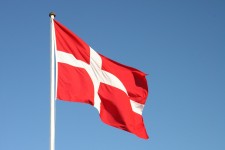Denmark Dumped $750 million in Kroner Hours after Brexit
 Scandinavia’s biggest bank estimates Denmark sold almost $750 million in kroner to weaken the currency after it became clear early on Friday (June 24) that Britons had voted to leave the European Union.
Scandinavia’s biggest bank estimates Denmark sold almost $750 million in kroner to weaken the currency after it became clear early on Friday (June 24) that Britons had voted to leave the European Union.
The flight into safe-haven markets triggered by Brexit drove the krone to its strongest level against the euro in more than a decade, forcing the central bank to intervene to defend its currency peg.
The bank probably sold about 5 billion kroner ($744 million) on Friday (June 24), according to Jan Stoerup Nielsen, a senior analyst at Nordea in Copenhagen. That follows a resumption of interventions to weaken the krone in May for the first time since February last year, when Denmark’s euro peg was under a speculative attack. Interventions in May reached 23.6 billion kroner.
The bank is due to publish official intervention data on July 4. Foreign reserves are about 42 percent lower than their peak in March last year, when they were almost equivalent to half of Denmark’s gross domestic product. While Switzerland was forced to abandon its euro peg, the Danes prevailed after cutting rates well below zero, halting government bond sales and pouring a record amount of kroner into the market to weaken the currency.
The krone traded at 7.4379 against the euro as of 2:43pm on Wednesday (June 29) in Copenhagen. The central bank targets 7.46038 kroner per euro in a 2.25 percent band. In practice it seeks to defend a much tighter tolerance interval of around 0.1 percent.
Treasury Bills Bids Rejected
Denmark’s debt office rejected all bids for Treasury bills in an auction on Wednesday. The debt, which traditionally attracts mostly offshore investors, drew bids for 3.5 billion kroner. In a separate auction, the office bought back 300 million kroner in 2016 notes at a yield of minus 0.665 percent. That’s just below Denmark’s benchmark deposit rate of minus 0.65 percent, and means the debt office is losing money on the repurchases.
Jens Naervig Pedersen, a senior analyst at Danske Bank, says the purchases mark a step beyond traditional debt management and instead can be seen as a monetary policy measure.
It suggests “the debt office and central bank are to some extent coordinating efforts,” he said. “By buying back the bonds, the debt office is keeping Danish bond prices up and making it less attractive for foreign investors to buy, which helps take pressure off the krone.”
Only Germany and Switzerland Have Lower Rates
A similar coordination took place early last year when the debt office suspended government bond sales in order to stop offshore investors hoarding krone-denominated assets.
Danish yields fell on Wednesday with the 10-year hitting a record low of 0.07 percent. Only Germany and Switzerland have lower rates on benchmark 10-year debt in Europe, with yields in those countries trading below zero.
It “brings back memories of what happened in the beginning of 2015,” Nielsen said in a tweet after the auction results were published.
» Read more about KeyStock and learn about how to trade in currencies online.





